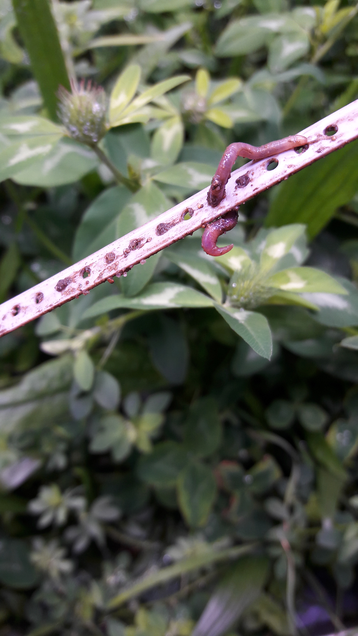2017 - Wormotron
Earthworms are ecosystem engineers that account for the highest biomass of invertebrates in the soil. Exotic earthworms have significant impact on native ecosystems, with cascading effects on native communities[1] [2] [3]. Canada's temperate boreal forests, which have been lacking native earthworms since the last ice age, are a good model system for studying the impact of earthworm invasion on native communities and ecosystems.
The Wormotron study, which was conducted from early August 2017 to late January 2018, aimed to investigate the responses of above- and belowground communities to the invasion of earthworms. The main focus was on earthworm effects on the defense of two Poplar tree species against their antagonists, as well as on plant traits of the herbaceous community. In addition, effects of the introduction of exotic earthworms on bacterial and fungal communities, Collembola populations as well as their development and decomposition activity were investigated.
In July 2017, Canadian boreal forest communities were established in twelve of the EcoUnits, consisting of four Canadian native plant species - two grasses (Calamagrostis canadensis, Bromus ciliatus) and two herbs (Aster laevis, Achillea millefolium) - as well as two typical tree species (Populus tremuloides, Populus balsamifera). To half of the chambers, three ecological groups of earthworms (epigeic, endogeic and anecic) were introduced. After six months, the species abundances and biomass of plant-, earthworm-, and Collembola communities were recorded, as well as the above- and belowground functional traits of the trees, grasses and herbs, fungal and herbivore infestation of tree leaves, as well as soil microbial community composition.
References
[1] Crooks, J. A. (2002) Characterizing ecosystem-level consequences of biological invasions: the role of ecosystem engineers. Oikos, 97, 153-166.
[2] Ferlian, O., Eisenhauer, N., Aguirrebengoa, M., et al. and Thakur, M. P. (2018) Invasive earthworms erode soil biodiversity: A meta-analysis. Journal of Animal Ecology, 87, 162-172.
[3] Holdsworth, A. R., Frelich, L. E. and Reich, P. B. (2007) Effects of Earthworm Invasion on Plant Species Richness in Northern Hardwood Forests. Conservation Biology, 21, 997-1008.

